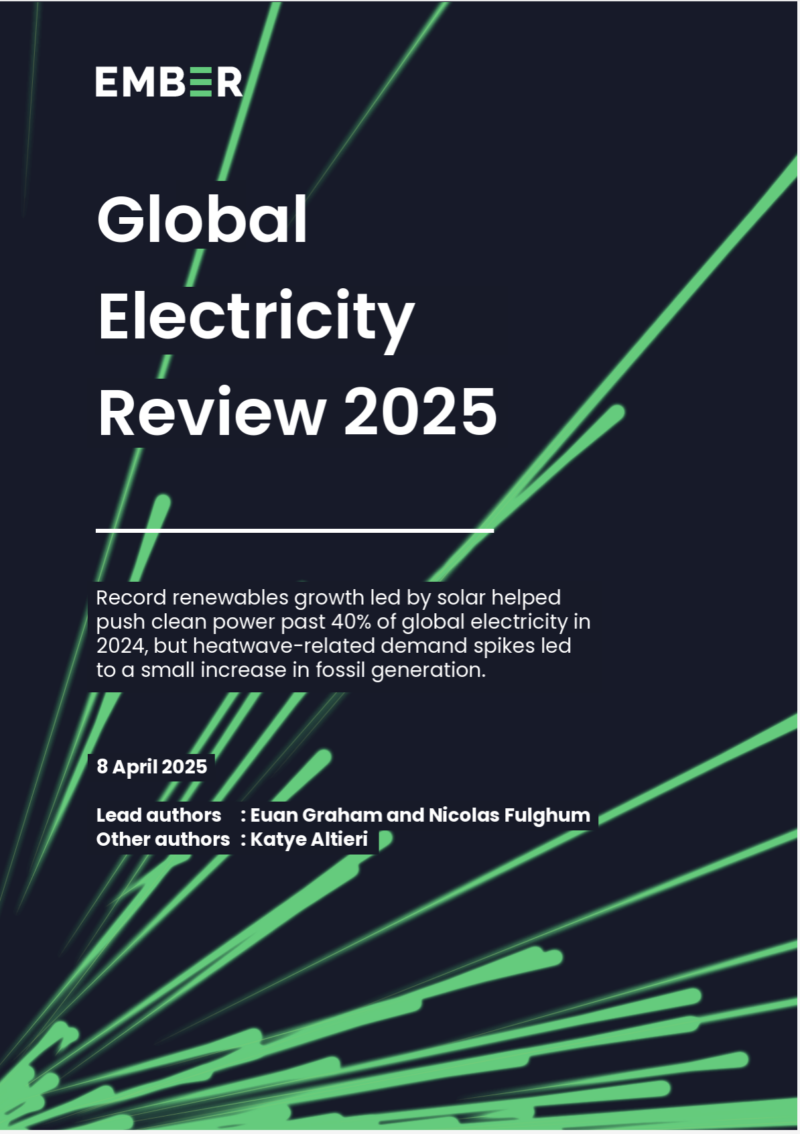
Ember’s sixth annual Global Electricity Review provides the first comprehensive overview of changes in global electricity generation in 2024, based on reported data. It presents the trends underlying them, and the likely implications for energy sources and power sector emissions in the near future.
With the report, Ember is also releasing the first comprehensive, free dataset of global electricity generation in 2024. The report analyses electricity data from 215 countries, including the latest 2024 data for 88 countries representing 93% of global electricity demand, as well as estimates for 2024 for all other countries.
The global electricity report also includes data for 13 geographic and economic groupings, including Africa, Asia, the EU and the G7. It also dives deeper into the seven countries and regions with the highest electricity demand, which account for 72% of global electricity demand. In addition to electricity generation data, the report uses weather and capacity data to uncover the underlying trends shaping the global power sector.
Ember, a global energy think tank, made all of the data freely accessible to empower others to do their own analysis and help speed up the switch to clean electricity.
Among other things the report finds that record renewables growth led by solar helped push clean power past 40% of global electricity in 2024. Solar generation has doubled over the last three years to reach over 2000 TWh. Solar was the largest source of new electricity generation globally for the third year in a row (+474 TWh) and the fastest growing source of electricity (+29%) for the 20th year in a row.
More than half (53%) of the increase in solar generation in 2024 was in China, with China’s clean generation growth meeting 81% of its demand increase in 2024.
The fast pace of global solar growth is set to continue, with 2024 setting a new record for solar capacity installations in a single year – more than double the amount installed in 2022. Global solar power capacity reached 1 TW in 2022 after decades of growth, but reached 2 TW only two years later, in 2024.
Heatwave-related demand spikes led to a small increase in fossil generation.
The paper’s lead authors are Euan Graham and Nicolas Fulghum. Katye Altieri is a secondary author.
This report is published under a Creative Commons ShareAlike Attribution License (CC BY-SA 4.0).
Subscribe to the free Energy Changemakers Newsletter to be notified about new reports and papers we post in this library.
